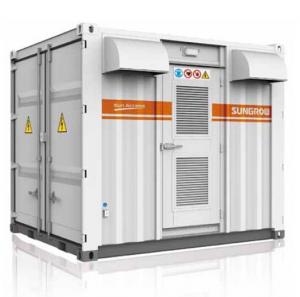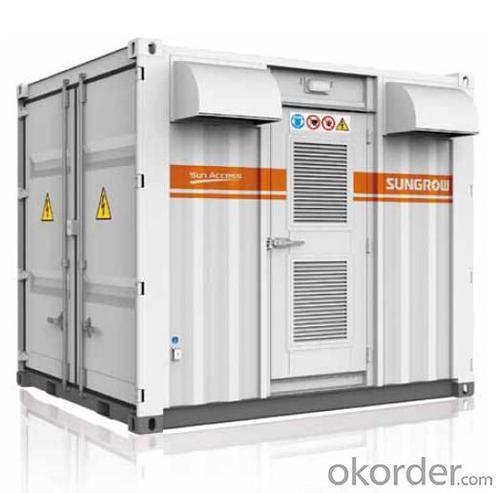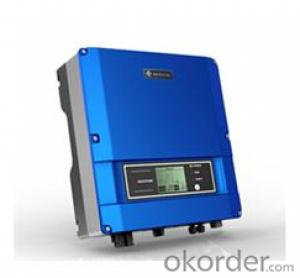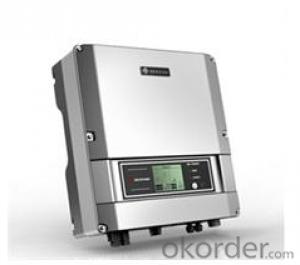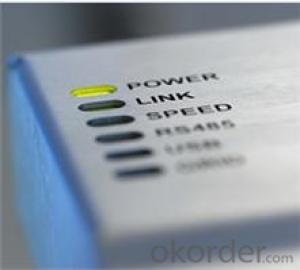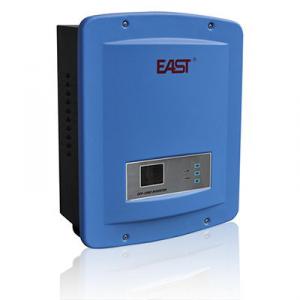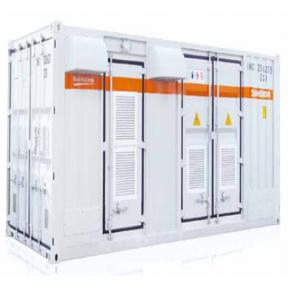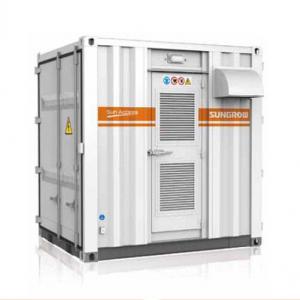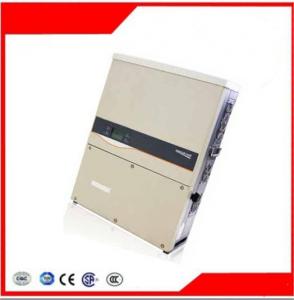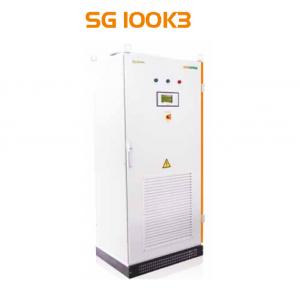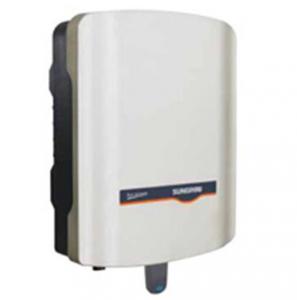3000 Watt Solar Inverter Photovoltaic On-Grid Connected Inverter SG1000TS-M PV Inverter
- Loading Port:
- China Main Port
- Payment Terms:
- TT or LC
- Min Order Qty:
- 500000 unit
- Supply Capability:
- 3000000 unit/month
OKorder Service Pledge
OKorder Financial Service
You Might Also Like
1. Structure of Photovoltaic On-Grid Connected Inverter SG1000TS-M PV inverter Description
A solar inverter, or PV inverter, or Solar converter, converts the variable direct current (DC) output of a photovoltaic (PV) solar panel into
autility frequency alternating current (AC) that can be fed into a commercial electrical grid or used by a local, off-grid electrical network.
It is acritical BOS–component in a photovoltaic system, allowing the use of ordinary AC-powered equipment. Solar inverters have
special functions adapted for use with photovoltaic arrays, including maximum power point tracking and anti-islanding protection.
Suitable for 50Hz/60Hz grid, could be used in Europe, Middle East Asia, Southeast Asia and Australia.
2. Main Features of the Photovoltaic On-Grid Connected Inverter SG1000TS-M PV inverter
• 7 square meters area for megawatt-class equipment
• Transport and installation by forklift, more flexible and economical
• Open door design of four sides, easy for installation and maintenance
• More flexible for inner devices overall replacement
• Efficient cooling patented design of combination inline and ventilation
• Patented structure design of inlet and outlet, effective dust proof
• Thick and efficient heat insulation layer
• Advanced three-level circuit structure improves product performance
• 8-MPPT, wide MPP voltage range, Flexible setting of 2 /4/ 8 MPPT
• Comprehensive modular ,Draw-type design
3. Photovoltaic On-Grid Connected Inverter SG1000TS-M PV inverter Images
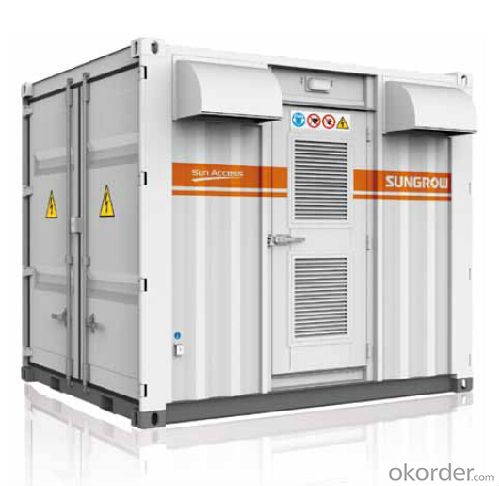
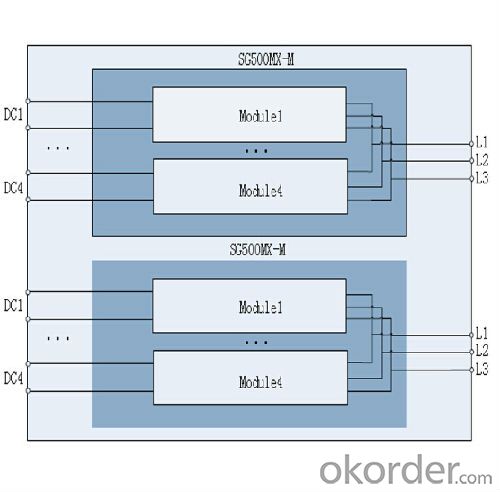
4. Photovoltaic On-Grid Connected Inverter SG1000TS-M PV inverter Specification
Input (DC) |
|
Max. DC power (@ cos φ =1) | 1120kW |
Max. input voltage | 1000V |
Start voltage | 520V |
Min. working voltage | 500V |
Max. input current | 2280A |
MPPT voltage range | 500~850V |
Number of MPPTs | 2, 4, 8 |
Number of DC inputs | 2 x 8 |
|
|
Output (AC) |
|
Rated power | 1000kW |
Max. output AC power | 1100kVA |
Max. output current | 2036A |
THD | <3%(at nominal power) |
Nominal AC voltage | 315V |
AC voltage range | 252~362Vac |
Nominal grid frequency | 50Hz / 60Hz |
Grid frequency range | 47~52Hz / 57~ 62 Hz |
Power factor | >0.99@default value at nominal power, adj. 0.9 overexcited ~0.9 underexcited |
Isolated transformer | No |
DC current injection | <0.5% In |
|
|
Efficiency |
|
Max. efficiency | 98.80% |
European efficiency | 98.60% |
|
|
Protection |
|
DC disconnect device | Switch-disconnector with fuses |
AC disconnect device | Switch-disconnector with fuses |
DC overvoltage protection | Yes |
AC overvoltage protection | Yes |
Grid monitoring | Yes |
Ground fault monitoring | Yes |
Overheat protection | Yes |
Insulation monitoring | Yes |
|
|
General Data |
|
Dimensions(W×H×D) | 2991X2591X2438mm |
Weight | Containing DC Distribution Cabinet: 5169kg, Not Containing DC Distribution Cabinet: 4834kg |
Operating ambient temperature range | -35~+50℃ |
External auxiliary supply voltage | 380V |
Cooling method | Temperature controlled air-cooling |
Ingress protection rating | IP54 |
Allowable relative humidity range | 0~95%, non -condensing |
Max. operating altitude | 6000m (derating > 3000m) |
Communication port/protocols | Standard: RS485/ Modbus, Internet Options: CDT, DNP3.0, 101, 103, 104, GPRS/CDMA module |
5. FAQ of Photovoltaic On-Grid Connected Inverter SG1000TS-M PV inverter
Q1. What is the difference between inverter and solar inverter?
A1. Inverter only has AC inpput, but solar inverter both connect to AC input and solar panel, it saves more power.
Q2. What is the difference between MPPT&PWM?
A2. MPPT has higher efficiency, it can track the max power point and won't waste energy.
- Q: How does a solar inverter handle harmonics in the grid?
- A solar inverter handles harmonics in the grid by incorporating a built-in filter that helps mitigate the impact of harmonics. This filter is designed to reduce the distortion caused by harmonics, ensuring that the inverter's output adheres to the required grid standards. Additionally, advanced inverters may also employ control algorithms that actively monitor and adjust the output waveform to minimize harmonic distortion and maintain grid stability.
- Q: What are the potential risks of electrical shock from a solar inverter?
- The potential risks of electrical shock from a solar inverter include direct contact with live electrical components, inadequate insulation or grounding, improper installation or maintenance, and failure to follow safety guidelines. Electrical shocks can cause injury, burns, and even fatalities. It is crucial to ensure proper precautions are taken, such as using qualified electricians, following manufacturer instructions, and implementing safety measures to mitigate these risks.
- Q: Can a solar inverter be used with bifacial solar panels?
- Yes, a solar inverter can be used with bifacial solar panels. Bifacial solar panels have the ability to capture sunlight from both sides, making them more efficient. A solar inverter is responsible for converting the DC power generated by solar panels into usable AC power for homes or businesses. Therefore, it can easily be used with bifacial solar panels to ensure efficient power conversion and utilization.
- Q: What are the advantages of using a three-phase solar inverter?
- There are several advantages of using a three-phase solar inverter. Firstly, it allows for a more balanced distribution of power between the three phases, resulting in a more efficient use of electricity. This can lead to increased energy production and savings. Additionally, three-phase solar inverters provide a higher power output compared to single-phase inverters, making them suitable for larger installations. They also offer enhanced voltage stability and improved grid integration, ensuring a reliable and stable power supply. Overall, the use of a three-phase solar inverter can optimize energy generation, improve system performance, and provide greater flexibility for solar installations.
- Q: How does the voltage regulation affect the performance of a solar inverter?
- Voltage regulation plays a crucial role in the performance of a solar inverter. It ensures that the output voltage of the inverter remains stable and within an acceptable range, regardless of fluctuations in the input voltage. This stability is vital for the efficient operation of the inverter and the overall performance of the solar power system. Improper voltage regulation can lead to various issues such as increased power losses, reduced energy production, and potential damage to connected devices.
- Q: What is the maximum power output of a residential solar inverter?
- The maximum power output of a residential solar inverter typically ranges between 1 kW to 10 kW, depending on the size and capacity of the system.
- Q: Can a solar inverter be used with a solar-powered outdoor lighting system?
- Yes, a solar inverter can be used with a solar-powered outdoor lighting system. A solar inverter is responsible for converting the direct current (DC) generated by solar panels into alternating current (AC) that can be used to power various devices, including outdoor lighting systems. By connecting the solar panels to a solar inverter, the generated energy can be efficiently transformed and utilized for powering the lighting system, ensuring sustainable and renewable lighting solutions.
- Q: What is the role of a solar inverter in a net metering system?
- The role of a solar inverter in a net metering system is to convert the direct current (DC) electricity generated by solar panels into alternating current (AC) electricity that can be used by the grid or consumed in the building. It also ensures that any excess electricity produced by the solar panels is fed back into the grid, allowing the system owner to receive credits or compensation for the surplus energy.
- Q: What is the importance of voltage and frequency control in a solar inverter?
- Voltage and frequency control are crucial in a solar inverter as they ensure the stability and reliability of the electrical system. Voltage control regulates the output voltage of the inverter, ensuring it is within safe limits and compatible with the grid or the connected appliances. This is important to protect the electrical devices from overvoltage or undervoltage conditions, which could potentially damage them. Frequency control, on the other hand, maintains the output frequency of the inverter in synchronization with the grid frequency. This synchronization is vital for the seamless integration of the solar power into the existing electrical grid. Inconsistent frequencies can lead to instability, power quality issues, and potential damage to equipment. Overall, voltage and frequency control in a solar inverter play a significant role in maintaining a reliable and efficient electrical system, safeguarding the connected appliances, and ensuring the proper integration of solar power into the grid.
- Q: What are the key factors affecting the reliability of a solar inverter?
- The key factors affecting the reliability of a solar inverter include the quality and durability of its components, such as the semiconductor devices, capacitors, and transformers. The design and manufacturing processes also play a significant role, as well as the overall system integration and installation. The environmental conditions, such as temperature, humidity, and dust levels, can impact the inverter's reliability, along with the quality of the electrical grid and the stability of the solar power generation. Regular maintenance and monitoring are crucial for identifying and addressing any potential issues that may arise, ensuring the long-term reliability of the solar inverter.
Send your message to us
3000 Watt Solar Inverter Photovoltaic On-Grid Connected Inverter SG1000TS-M PV Inverter
- Loading Port:
- China Main Port
- Payment Terms:
- TT or LC
- Min Order Qty:
- 500000 unit
- Supply Capability:
- 3000000 unit/month
OKorder Service Pledge
OKorder Financial Service
Similar products
Hot products
Hot Searches
Related keywords
